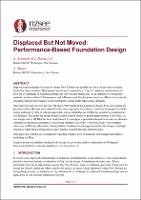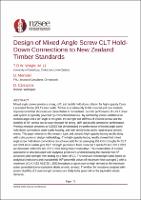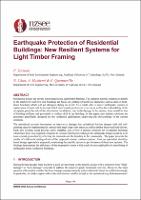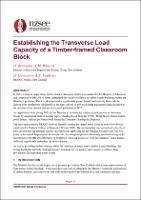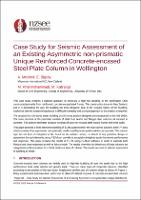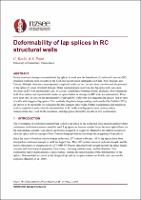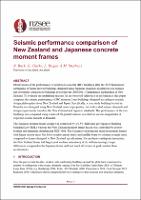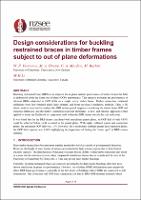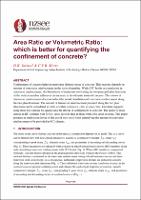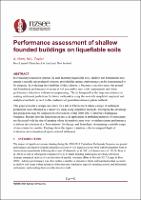Search
Now showing items 1-10 of 16
Displaced But Not Moved: Performance-Based Foundation Design
(New Zealand Society for Earthquake Engineering, 2023-04-19)
Improved understanding of seismicity within New Zealand and globally has led to an increase in seismic hazard for many locations. High seismic acceleration demands (e.g. >1g) for buildings and infrastructure have led to ...
Design of Mixed Angle Screw CLT Hold-Down Connections to New Zealand Timber Standards
(New Zealand Society for Earthquake Engineering, 2023-04-19)
Mixed angle screws provide a strong, stiff, and ductile hold-down solution for high-capacity Cross Laminated Timber (CLT) shear walls. Timber is an inherently brittle material and most inelastic responses in timber structures ...
Earthquake Protection of Residential Buildings: New Resilient System for Light Timber Framing
(New Zealand Society for Earthquake Engineering, 2023-04-19)
In NZ, similar to other countries, residential houses are mostly constructed using light timber framing. The common seismic solutions available in the market for such low-rise buildings are based on yielding of sacrificial ...
Establishing the Transverse Load Capacity of a Timber-framed Classroom Block
(New Zealand Society for Earthquake Engineering, 2023-04-19)
In 2013, longitudinal testing of single storey timber-framed classroom blocks was initiated by the Ministry of Education and completed by BRANZ to better understand the seismic resilience of timber-framed buildings within ...
Case Study for Seismic Assessment of an Existing Asymmetric non-prismatic Unique Reinforced Concrete- encased Steel Plate Column in Wellington
(New Zealand Society for Earthquake Engineering, 2023-04-19)
This case study presents a tailored approach to assessing a high-rise building in the Wellington CBD constructed primarily from reinforced concrete encased steel frames. This construction is rare in New Zealand, and it is ...
Deformability of lap splices in RC structural walls
(New Zealand Society for Earthquake Engineering, 2023-04-19)
Severe structural damage associated with lap splices located near the foundation of reinforced concrete (RC) structural walls has been recorded in the field after recent major earthquakes in Chile, New Zealand, and Taiwan. ...
Seismic Performance Comparison of New Zealand and Japanese Concrete Moment Frames
(New Zealand Society for Earthquake Engineering, 2023-04-19)
Observations of the performance of reinforced concrete (RC) buildings after the 2016 Kumamoto earthquake in Japan showed buildings designed using Japanese standards resulted in less damage and downtime compared to buildings ...
Design Considerations for Buckling Restrained Braces in Timber Frames Subject to Out of Plane Deformations
(New Zealand Society for Earthquake Engineering, 2023-04-19)
The introduction of using steel buckling restrained braces (BRBs) has proven to greatly improve the in-plane seismic performance of timber structures. However, little is understood about the performance of BRBs subject to ...
Area Ratio or Volumetric Ratio: Which is better for quantifying the confinement of concrete?
(New Zealand Society for Earthquake Engineering, 2023-04-19)
Confinement of concrete helps in improving ultimate strain of concrete. This increase depends on amount of transverse reinforcement in the vertical member. While the need for 1350 hooks in transverse reinforcement is ...
Performance assessment of shallow founded buildings on liquefiable soils
(New Zealand Society for Earthquake Engineering, 2023-04-19)
In evaluating foundation options for sites featuring liquefiable soils, shallow raft foundations may remain a suitable and preferred solution, provided the seismic performance can be demonstrated to be adequate. In evaluating ...

